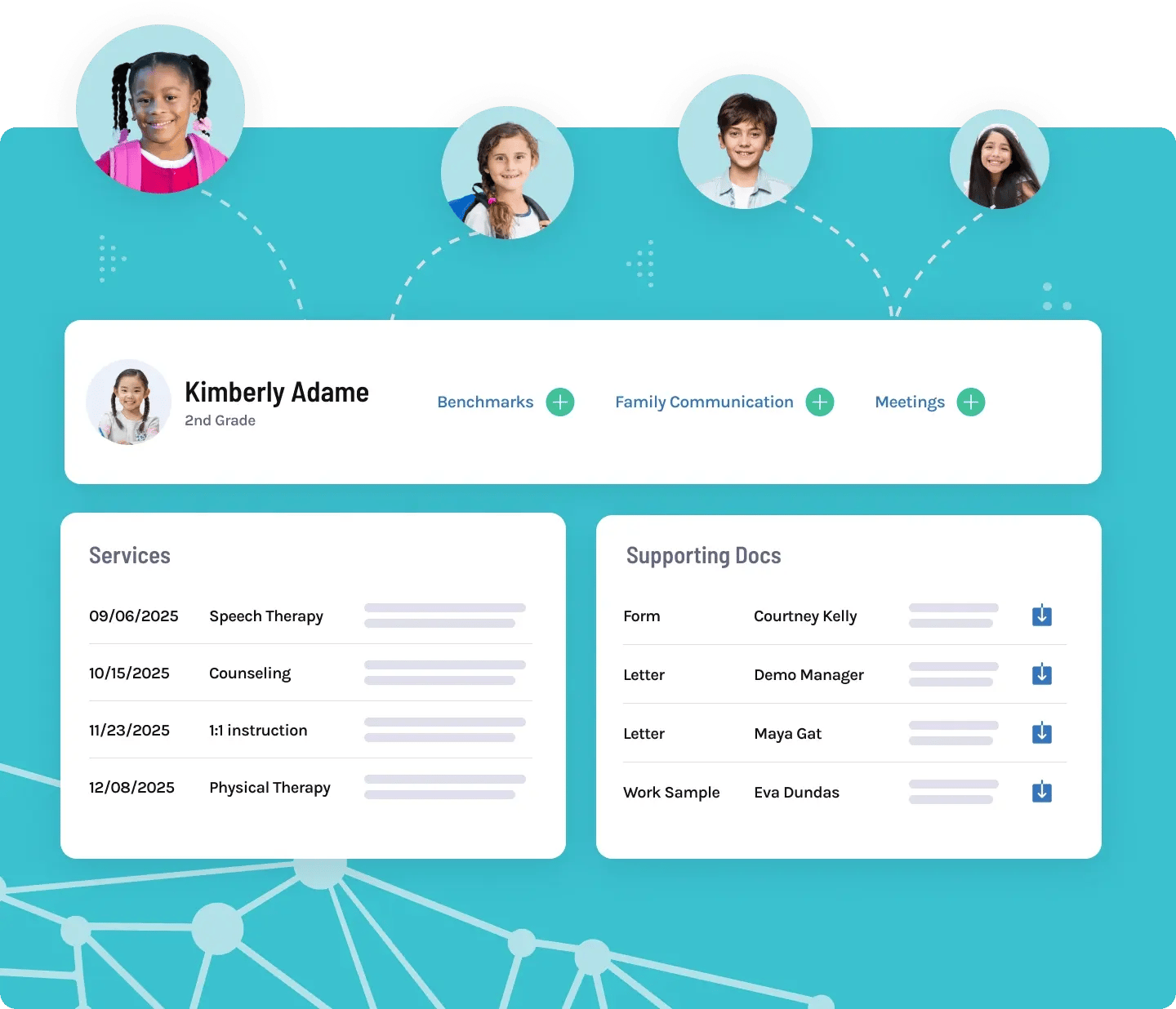"Education is not the filling of a pail, but the lighting of a fire." - William Butler Yeats
With all the distractions of our culture today, keeping students engaged in learning is an all-too-common challenge. Although numerous teaching obstacles remain, there are several small but significant things that schools and teachers can do to boost and maintain student engagement.
Read along to review some student engagement strategies you can implement in your district.
Student Engagement Key Takeaways
- Engagement is multidimensional: behavioral, emotional, and cognitive—and critical for academic and SEL outcomes.
- Teacher relationships and well-being are foundational to student engagement.
- Daily SEL routines and interactive lessons boost participation and connection.
What Is Student Engagement?
The concept of student engagement is multidimensional, meaning that there are different levels of classroom engagement.
 Behavioral engagement refers to students’ academic involvement and participation in learning activities. It includes things such as effort, persistence, attention, asking questions, participation, following rules, and the absence of disruptive behaviors. This is often the type of engagement that teachers are most aware of and work to support.
Behavioral engagement refers to students’ academic involvement and participation in learning activities. It includes things such as effort, persistence, attention, asking questions, participation, following rules, and the absence of disruptive behaviors. This is often the type of engagement that teachers are most aware of and work to support. Another type of engagement that is just as important is emotional engagement. This refers to students' affective attitudes toward their school, classroom, classmates, and teachers. It includes emotions such as boredom, happiness, sadness, anxiety, a sense of belonging, and a liking or disliking toward school.
Another type of engagement that is just as important is emotional engagement. This refers to students' affective attitudes toward their school, classroom, classmates, and teachers. It includes emotions such as boredom, happiness, sadness, anxiety, a sense of belonging, and a liking or disliking toward school. The last type of engagement is known as cognitive engagement, which is defined as students’ strategic investment in learning. Some scholars see this type of engagement as a subcomponent of behavioral engagement, but it includes additional features such as self-regulation, a preference for challenge and hard work, going beyond requirements, efforts in mastering new knowledge and skills, and using learning strategies.
The last type of engagement is known as cognitive engagement, which is defined as students’ strategic investment in learning. Some scholars see this type of engagement as a subcomponent of behavioral engagement, but it includes additional features such as self-regulation, a preference for challenge and hard work, going beyond requirements, efforts in mastering new knowledge and skills, and using learning strategies.
It is also important to note that these three dimensions of engagement are linked. When students have a good relationship with their teachers and classmates and feel a sense of belonging to their school (emotional engagement), they may be more likely to participate in class discussions and activities (behavioral engagement). Over time this can lead to a stronger commitment and investment in their learning (cognitive engagement).
Why Is Student Engagement Important?
Student engagement can be seen as the glue that holds together all aspects of student learning and growth.
Not only does student engagement make teaching itself more fun, engaging, and rewarding, but it has been shown to have critical impacts on students. When students display high levels of behavioral, emotional, and cognitive engagement, they are more likely to excel academically, form a stronger sense of connection with their school, and have a more positive sense of social-emotional well-being.
On the other hand, low student engagement is associated with a host of negative outcomes, such as delinquency, violence, substance abuse, and school dropout. Although these troubling outcomes tend to appear in adolescence, having poor engagement in elementary and middle school can set students on a negative trajectory. Thus, it is critical to promote student engagement across all grade levels.
What Factors Contribute to Student Engagement?
Research has shown that teacher-student relationships are a key contributor to all types of student engagement. When students get along with their teachers and feel like they are seen and heard within their classrooms, they are more likely to display positive indicators of engagement. Teachers’ perceptions of their relationships with their students also impact student engagement. When teachers report having a difficult relationship with a student, it is more likely that the student will also show signs of disengagement.
Another important predictor of student engagement is the level of teacher stress and burnout. When teachers feel extremely overwhelmed, overworked, and emotionally drained, their students are more likely to show signs of disengagement. It is probably not surprising that teachers’ sense of well-being is linked to students’ behavior in the classroom; nevertheless, supporting teachers and their social-emotional needs is critical. When teachers feel recognized and supported by their school leaders and have positive relationships with their colleagues, they are less likely to experience high levels of burnout and emotional exhaustion.
Finally, social-emotional learning (SEL) is another factor that can impact students’ behavioral, emotional, and cognitive engagement in classrooms. When implemented effectively, SEL practices can build positive relationships between students and teachers and improve students’ sense of belonging in their school and classroom community. This emotional safety provides the foundation for more behavioral forms of engagement.
There are also links between students’ social-emotional competencies and their executive functioning and cognitive skills. One example of this is students’ self-regulation and self-management skills, which have been associated with cognitive engagement and the ability to develop a deeper understanding of academic content.
Examples of Classroom Practices That Promote Engagement
There are many different practices and approaches that can be used to keep students engaged. Below, we outline a few examples that can be used when teaching.
When these practices are implemented effectively on an ongoing basis, they can improve students’ behavioral, emotional, and cognitive engagement:
Embed interactive components into lessons
Games, contests, polls, and collaborative hands-on activities can all be used to promote students’ willingness to participate and stay focused. Research shows that students’ attention will start to fade at around 20 minutes of instruction, so try to build in at least one interactive component every 20 minutes or so. This can also include small group discussions or pair and shares.
One of our Branching Minds teachers recommended the platform Nearpod, which she uses to keep students engaged. She also uses ClassDojo to provide students with incentives and different ways to stay engaged with the classroom content.
Use everyday practices to promote social and emotional connections
There are a lot of small but meaningful ways to promote students’ feelings of belonging and connectedness with their teachers and peers. The Harmony SEL program provides evidence-based activities that foster students’ emotional engagement in their classroom. For example, their free Quick Connection Cards can be used to drive conversations among the whole class or with peers.
Many of our Branching Minds teachers utilize the Meet Up and Buddy Up practices from Harmony SEL each day as a starting point to engage and involve students from the outset.
Integrate student interests into classroom content
One of our Branching Minds teachers recommended motivating students by integrating their interests, hobbies, and favorite shows into lessons and activities. For example, a student’s trip to a pet store turned into an interview with the pet store owner and a whole class learning opportunity on how to build a saltwater fish tank.
Connecting academic content and real-life experiences is a great way to improve cognitive engagement. This approach also strengthens learning by connecting abstract concepts to the real world. Expert teachers have been known to use this strategy across various topic areas they teach to deepen students’ knowledge and engagement with the content.

About the author
Dr. Essie Sutton
Essie Sutton is an Applied Developmental Psychologist and the Director of Learning Science at Branching Minds. Her work brings together the fields of Child Development and Education Psychology to improve learning and development for all students. Dr. Sutton is responsible for studying the impacts of the Branching Minds on students’ academic, behavioral, and social-emotional outcomes. She also leverages MTSS research and best practices to develop and improve the Branching Minds platform.

MTSS Shouldn't Be So Hard
Empower your team with actionable insights that drive success for your students, staff, and school(s).















.png?width=716&height=522&name=Addressing%20Foundational%20Reading%20Skills%20in%20MTSS%20(preview).png)
.png?width=716&height=522&name=Understanding%20Literacy%20Basics%20(Preview).png)
